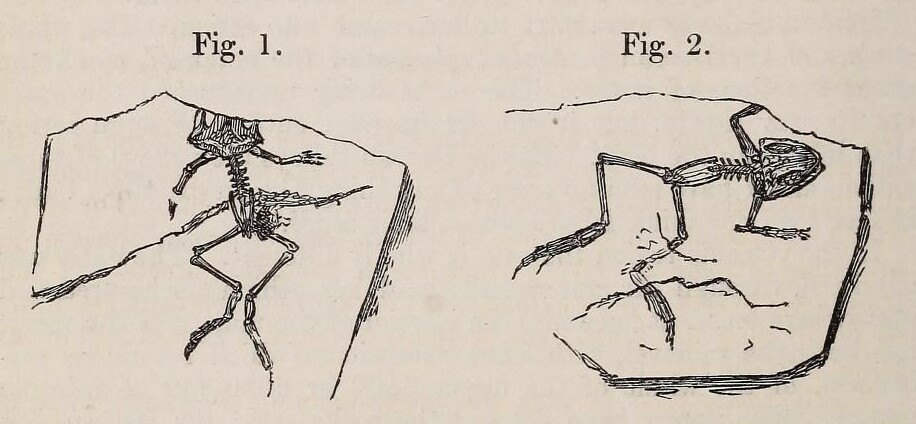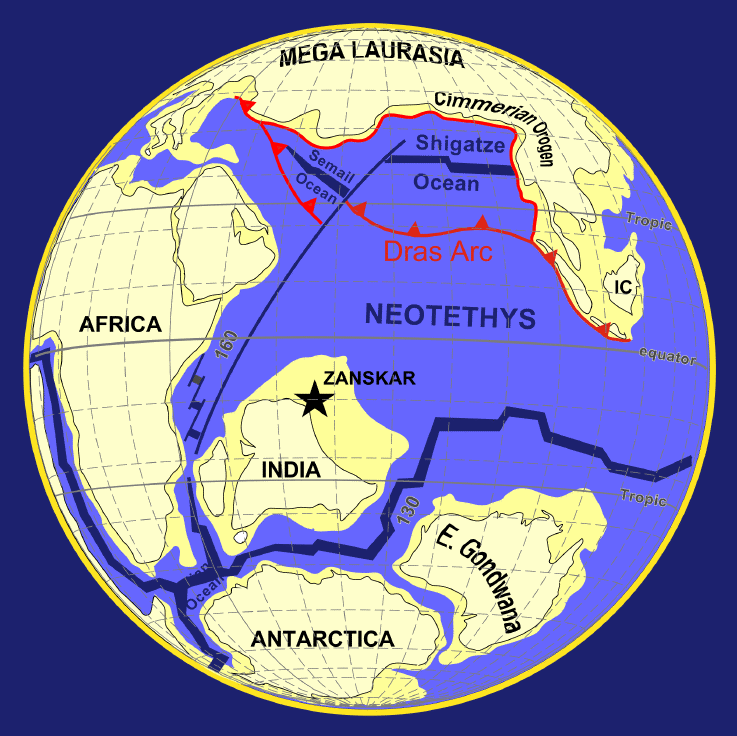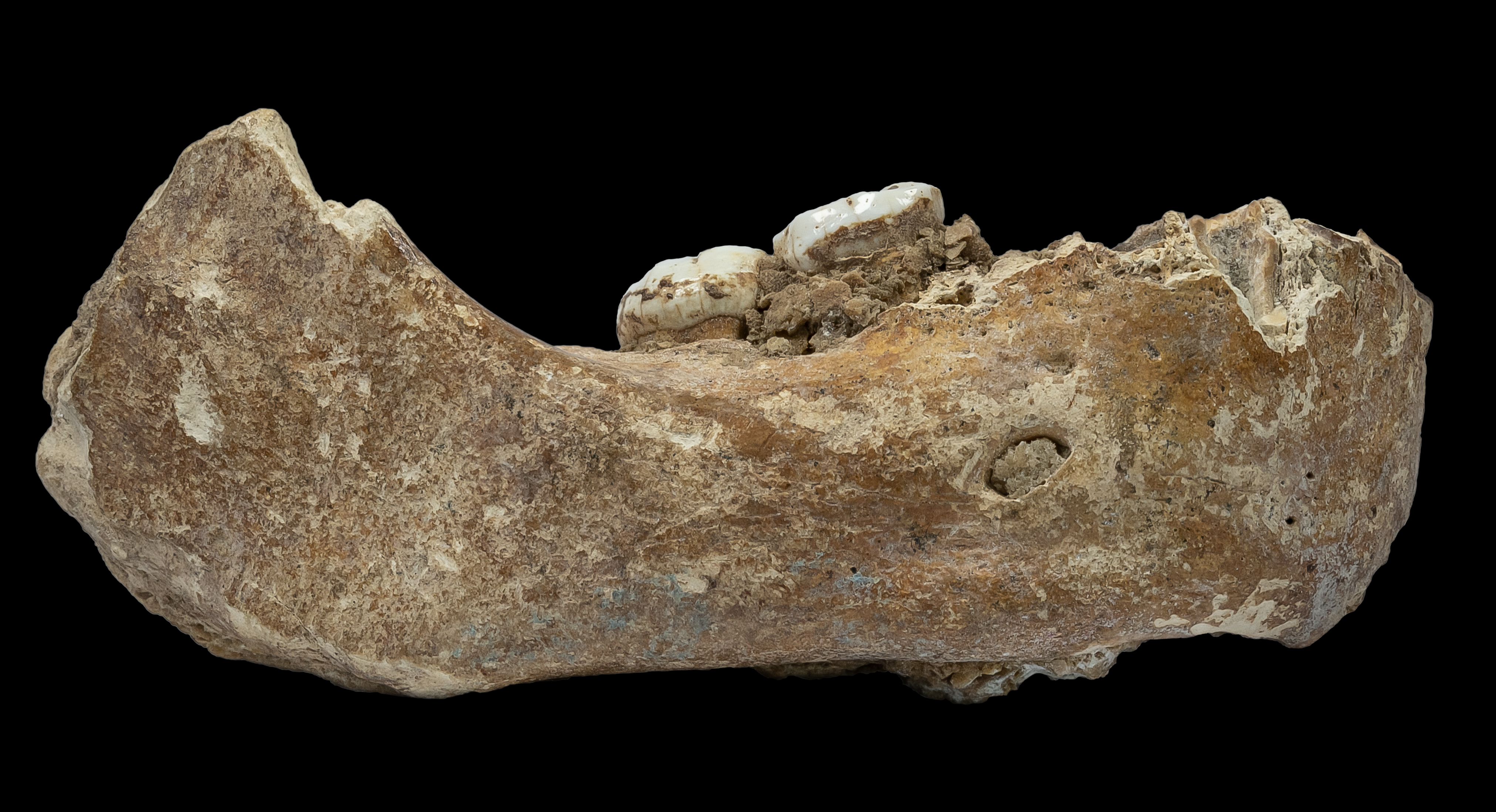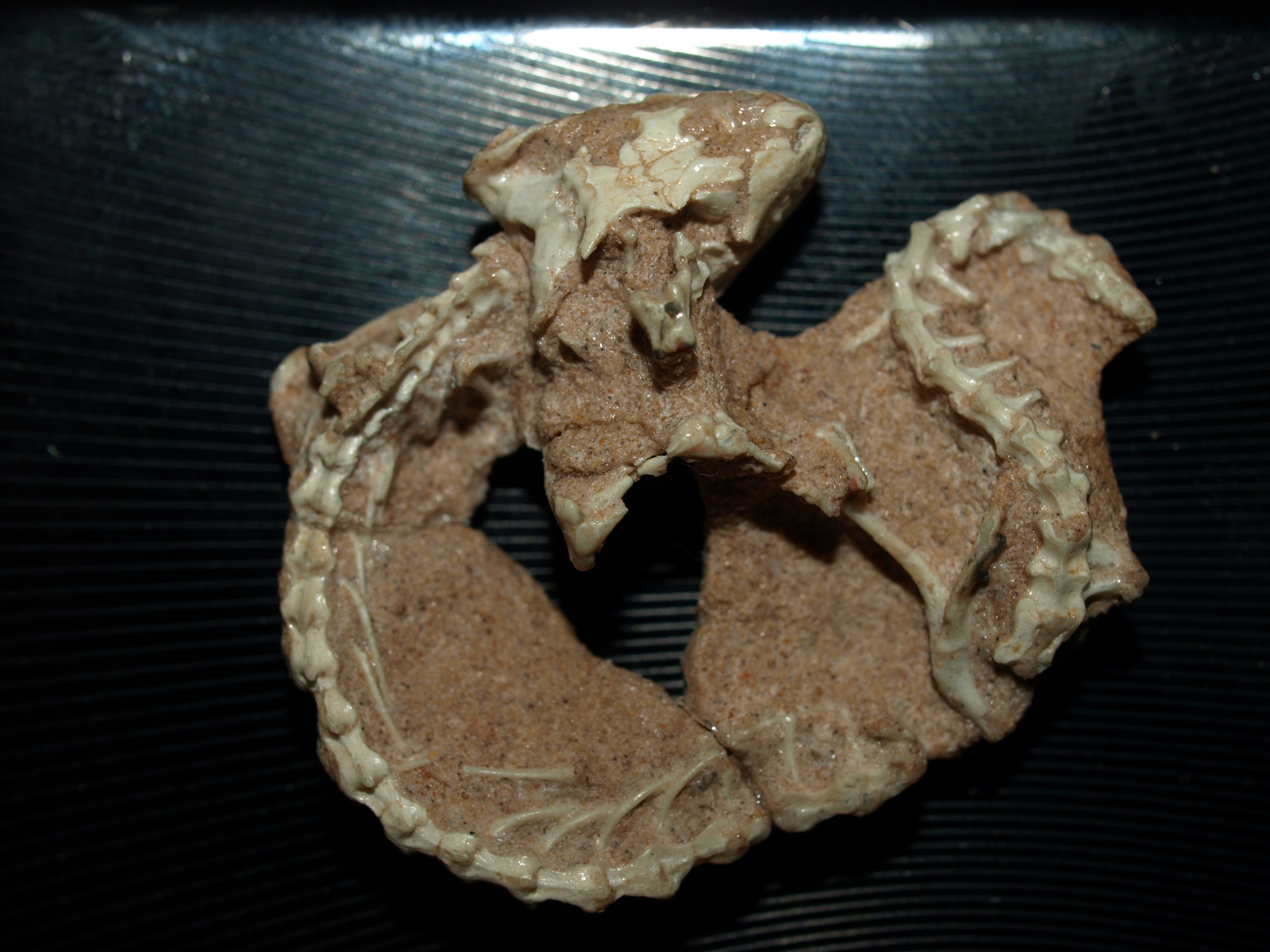|
Indotriconodon
''Indotriconodon magnus'' is an extinct mammal from the Late Cretaceous of India. A eutriconodont, it represents the geologically youngest of the group dating to the Maastrichtian just a few thousand years before the KT event (a record previously held by '' Alticonodon lindoei'' from the Campanian of Canada), as well as a relatively large sized Mesozoic mammal. Description ''Indotriconodon magnus'' is known only from a single lower molar. It is about 20% smaller than that of ''Repenomamus giganticus'' but larger than that of other eutriconodonts, making it a badger-sized mammal. Phylogeny In its 2024 description it nests deeply within Eutriconodonta, being sister taxa to Volaticotherini. Palaeoceology Found in the Intertrappean Beds, it co-existed with at least other ten mammal genera as well various squamates, turtles and dinosaur Dinosaurs are a diverse group of reptiles of the clade Dinosauria. They first appeared during the Triassic Geological period, period ... [...More Info...] [...Related Items...] OR: [Wikipedia] [Google] [Baidu] |
Eutriconodonta
Eutriconodonta is an order (biology), order of early mammals. Eutriconodonts existed in Asia (including Insular India, pre-contact India), Africa, Europe, North America, North and South America during the Jurassic and the Cretaceous periods. The order was named by Kermack ''et al.'' in 1973 as a replacement name for the paraphyletic Triconodonta. Traditionally seen as the classical Mesozoic small mammalian insectivores, discoveries over the years have shown them to be among the best examples of the diversity of mammals in this time period, including a vast variety of bodyplans, ecological niches and locomotion methods. Classification "Triconodonta" had long been used as the name for an order of early mammals which were close relatives of the ancestors of all present-day mammals, characterized by molar teeth with three main cusps on a crown that were arranged in a row. The group originally included only the family Triconodontidae and taxa that were later assigned to the separate ... [...More Info...] [...Related Items...] OR: [Wikipedia] [Google] [Baidu] |
Intertrappean Beds
The Intertrappean Beds are a Late Cretaceous and early Paleogene geologic unit in India. These beds are found as interbeds between Deccan Traps layers, including the slightly older Lameta Formation. They consist a number of different subgroups and formations, and span the Cretaceous–Paleogene boundary. Many mostly fragmentary fossils, especially of small vertebrates, are known from the formation. Indeterminate theropod and pterosaur remains have been recovered from the formation, as well as dinosaur eggs.Weishampel, et al. (2004). "Dinosaur distribution." Pp. 517-607. The mammal genera '' Deccanolestes'', '' Sahnitherium'', '' Bharattherium'', '' Indoclemensia, Indotriconodon'' and'' Kharmerungulatum'' have been recovered from several localities. The Early Eocene-aged Bamanbor locality in Gujarat preserves articulated freshwater fish specimens. A rich plant flora is known from the formation. Stratigraphy Although often thought of as a contemporaneous unit that was for ... [...More Info...] [...Related Items...] OR: [Wikipedia] [Google] [Baidu] |
Sunil Bajpai
Sunil Bajpai (born 30 September 1961) is the Chair Professor of Vertebrate Paleontology in the Department of Earth Sciences, Indian Institute of Technology Roorkee. He is in service as a professor at IIT Roorkee since 1st January 1996 till 30 September 2026. He also served as the director of the Birbal Sahni Institute of Palaeosciences from January 2013 to July 2018. Sunil Bajpai predominantly works on the Cenozoic vertebrates of India with focus on marine mammals, such as whales and sea cows. Bajpai and his collaborators fossil discoveries from the Eocene of Kutch (Gujarat) and the Himalayas have helped in understanding how whales have evolved. Bajpai also works on land mammals, which includes the early representatives of horses, artiodactyls, and primates, such as the stem perissodactyl family Cambaytheriidae, artiodactyl ''Gujaratia,'' and primates such as the adapoid '' Marcgodinotius'' and the omomyid Vastanomys'' Additionally, he has worked on many other fossil vertebrate ... [...More Info...] [...Related Items...] OR: [Wikipedia] [Google] [Baidu] |
Insular India
Insular India was an isolated landmass which became the Indian subcontinent. Across the latter stages of the Cretaceous and most of the Paleocene, following the breakup of Gondwana, the Indian subcontinent remained an isolated landmass as the Indian Plate drifted across the Tethys Ocean, forming the Indian Ocean. The process of India's separation from Madagascar first began 88 million years ago, but complete isolation only occurred towards the end of the Maastrichtian, a process that has been suggested to be the creation of the Deccan Traps. Soon after, the land mass moved northward rather quickly, until contact with Asia was established 55 million years ago. Even then, both landmasses did not become fully united until around 35 million years ago, and periods of isolation occurred as recently as 24 million years ago. Thus, for a period of 53 million years India retained a degree of isolation, 11 of which it was a complete island continent. This allowed ... [...More Info...] [...Related Items...] OR: [Wikipedia] [Google] [Baidu] |
2024 In Paleomammalogy
This article records new taxa of fossil mammals of every kind that are scheduled to be binomial nomenclature, described during the year 2024, as well as other significant discoveries and events related to paleontology of mammals that occurred in 2024. Afrotherians Proboscideans Proboscidean research * Hauffe, Cantalapiedra & Silvestro (2024) present a Bayesian model that can be used to determine diversification dynamics from fossil occurrence data, apply it to the fossil record of proboscideans, and interpret their findings as indicating that the diversification of proboscideans was influenced by dietary flexibility and biogeography (particularly the association with islands), while the emergence of humans was the primary driver of proboscidean extinctions. * Review of the evolution of the proboscidean head, focusing on the evolution of the anatomy and use of tusks and proboscis, is published by Nabavizadeh (2024). * A study on the evolution of limb bones of extant and extinct pr ... [...More Info...] [...Related Items...] OR: [Wikipedia] [Google] [Baidu] |
Monotypic Prehistoric Mammal Genera
In biology, a monotypic taxon is a taxonomic group (taxon) that contains only one immediately subordinate taxon. A monotypic species is one that does not include subspecies or smaller, infraspecific taxa. In the case of genera, the term "unispecific" or "monospecific" is sometimes preferred. In botanical nomenclature, a monotypic genus is a genus in the special case where a genus and a single species are simultaneously described. Theoretical implications Monotypic taxa present several important theoretical challenges in biological classification. One key issue is known as "Gregg's Paradox": if a single species is the only member of multiple hierarchical levels (for example, being the only species in its genus, which is the only genus in its family), then each level needs a distinct definition to maintain logical structure. Otherwise, the different taxonomic ranks become effectively identical, which creates problems for organizing biological diversity in a hierarchical system. ... [...More Info...] [...Related Items...] OR: [Wikipedia] [Google] [Baidu] |
Cretaceous Mammals Of Asia
The Cretaceous ( ) is a geological period that lasted from about 143.1 to 66 million years ago (Mya). It is the third and final period of the Mesozoic Era, as well as the longest. At around 77.1 million years, it is the ninth and longest geological period of the entire Phanerozoic. The name is derived from the Latin , 'chalk', which is abundant in the latter half of the period. It is usually abbreviated K, for its German translation . The Cretaceous was a period with a relatively warm climate, resulting in high eustatic sea levels that created numerous shallow inland seas. These oceans and seas were populated with now-extinct marine reptiles, ammonites, and rudists, while dinosaurs continued to dominate on land. The world was largely ice-free, although there is some evidence of brief periods of glaciation during the cooler first half, and forests extended to the poles. Many of the dominant taxonomic groups present in modern times can be ultimately traced back to origins in the C ... [...More Info...] [...Related Items...] OR: [Wikipedia] [Google] [Baidu] |
Extinct Animals Of India
Extinction is the termination of an organism by the death of its last member. A taxon may become functionally extinct before the death of its last member if it loses the capacity to reproduce and recover. As a species' potential range may be very large, determining this moment is difficult, and is usually done retrospectively. This difficulty leads to phenomena such as Lazarus taxa, where a species presumed extinct abruptly "reappears" (typically in the fossil record) after a period of apparent absence. Over five billion species are estimated to have died out. It is estimated that there are currently around 8.7 million species of eukaryotes globally, possibly many times more if microorganisms are included. Notable extinct animal species include non-avian dinosaurs, saber-toothed cats, and mammoths. Through evolution, species arise through the process of speciation. Species become extinct when they are no longer able to survive in changing conditions or against supe ... [...More Info...] [...Related Items...] OR: [Wikipedia] [Google] [Baidu] |
Dinosaur
Dinosaurs are a diverse group of reptiles of the clade Dinosauria. They first appeared during the Triassic Geological period, period, between 243 and 233.23 million years ago (mya), although the exact origin and timing of the #Evolutionary history, evolution of dinosaurs is a subject of active research. They became the dominant terrestrial vertebrates after the Triassic–Jurassic extinction event 201.3 mya and their dominance continued throughout the Jurassic and Cretaceous periods. The fossil record shows that birds are feathered dinosaurs, Evolution of birds, having evolved from earlier Theropoda, theropods during the Late Jurassic epoch, and are the only dinosaur lineage known to have survived the Cretaceous–Paleogene extinction event approximately 66 mya. Dinosaurs can therefore be divided into avian dinosaurs—birds—and the extinct non-avian dinosaurs, which are all dinosaurs other than birds. Dinosaurs are varied from taxonomy (biology), taxonomic, ... [...More Info...] [...Related Items...] OR: [Wikipedia] [Google] [Baidu] |
Turtle
Turtles are reptiles of the order (biology), order Testudines, characterized by a special turtle shell, shell developed mainly from their ribs. Modern turtles are divided into two major groups, the Pleurodira (side necked turtles) and Cryptodira (hidden necked turtles), which differ in the way the head retracts. There are 360 living and recently extinct species of turtles, including land-dwelling tortoises and freshwater terrapins. They are found on most continents, some islands and, in the case of sea turtles, much of the ocean. Like other Amniote, amniotes (reptiles, birds, and mammals) they breathe air and do not lay eggs underwater, although many species live in or around water. Turtle shells are made mostly of bone; the upper part is the domed Turtle shell#Carapace, carapace, while the underside is the flatter plastron or belly-plate. Its outer surface is covered in scale (anatomy), scales made of keratin, the material of hair, horns, and claws. The carapace bones deve ... [...More Info...] [...Related Items...] OR: [Wikipedia] [Google] [Baidu] |
Squamate
Squamata (, Latin ''squamatus'', 'scaly, having scales') is the largest Order (biology), order of reptiles; most members of which are commonly known as Lizard, lizards, with the group also including Snake, snakes. With over 11,991 species, it is also the second-largest order of Neontology, extant (living) vertebrates, after the Perciformes, perciform fish. Squamates are distinguished by their skins, which bear horny scale (zoology), scales or shields, and must periodically engage in molting. They also possess movable quadrate bones, making possible movement of the Maxilla, upper jaw relative to the neurocranium. This is particularly visible in snakes, which are able to open their mouths very widely to accommodate comparatively large prey. Squamates are the most variably sized living reptiles, ranging from the Sphaerodactylus ariasae, dwarf gecko (''Sphaerodactylus ariasae'') to the reticulated python (''Malayopython reticulatus''). The now-Extinction, extinct mosasaurs reached ... [...More Info...] [...Related Items...] OR: [Wikipedia] [Google] [Baidu] |







